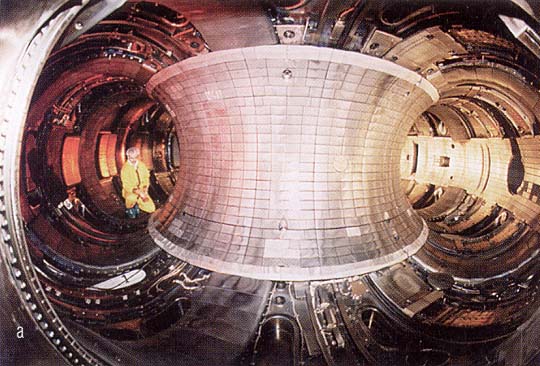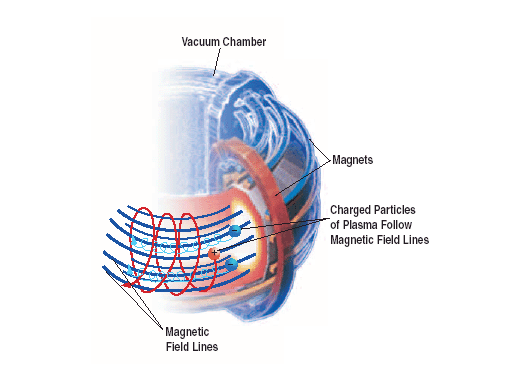|
Fusion can be created in three different ways: gravitational confinement,
magnetic confinement, and inertial confinement. Gravitational confinement
is witnessed every day when we look up at the sun. Since the sun is so
massive the gravity at its core is powerful enough to squeeze hydrogen
atoms together to form helium atoms. Though this is an efficient method
for stars, earths' gravity is insufficient to create fusion. The other
two possibilities, magnetic and inertial confinements, are possible, and
research is being focused in those areas.
In magnetic confinements a tokamak chamber has yielded the best results.
A tokamak is "a toroidal device comprising a hollow doughnut-shaped vessel
through which magnetic fields twists [;] it is the most common magnetic
confinement device understudy" (Fusion: Energy Source 1). The basic idea
behind the tokamak is to confine the plasma in a chamber and extract thermal
energy through the fusion reaction. Since plasma is electrically charged
it can essentially float through the chamber without touching the walls.
This enables the plasma reaction to reach "temperatures in excess of 100,000,000
degrees centigrade (the temperature of the sun) [while staying] confined
inside a metal chamber whose surface is nearer room temperature" (Glanz
7).
|
|
|
|


